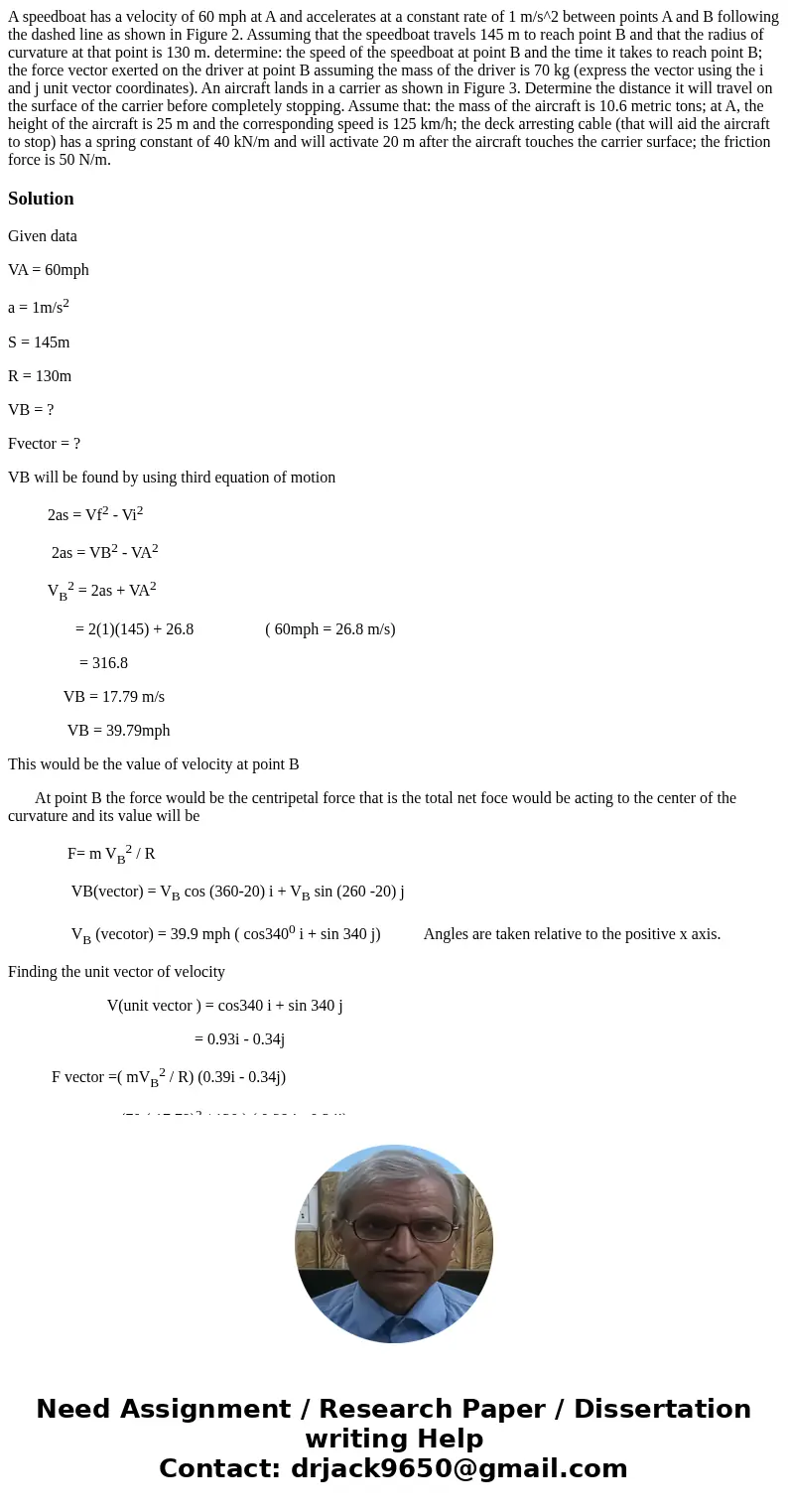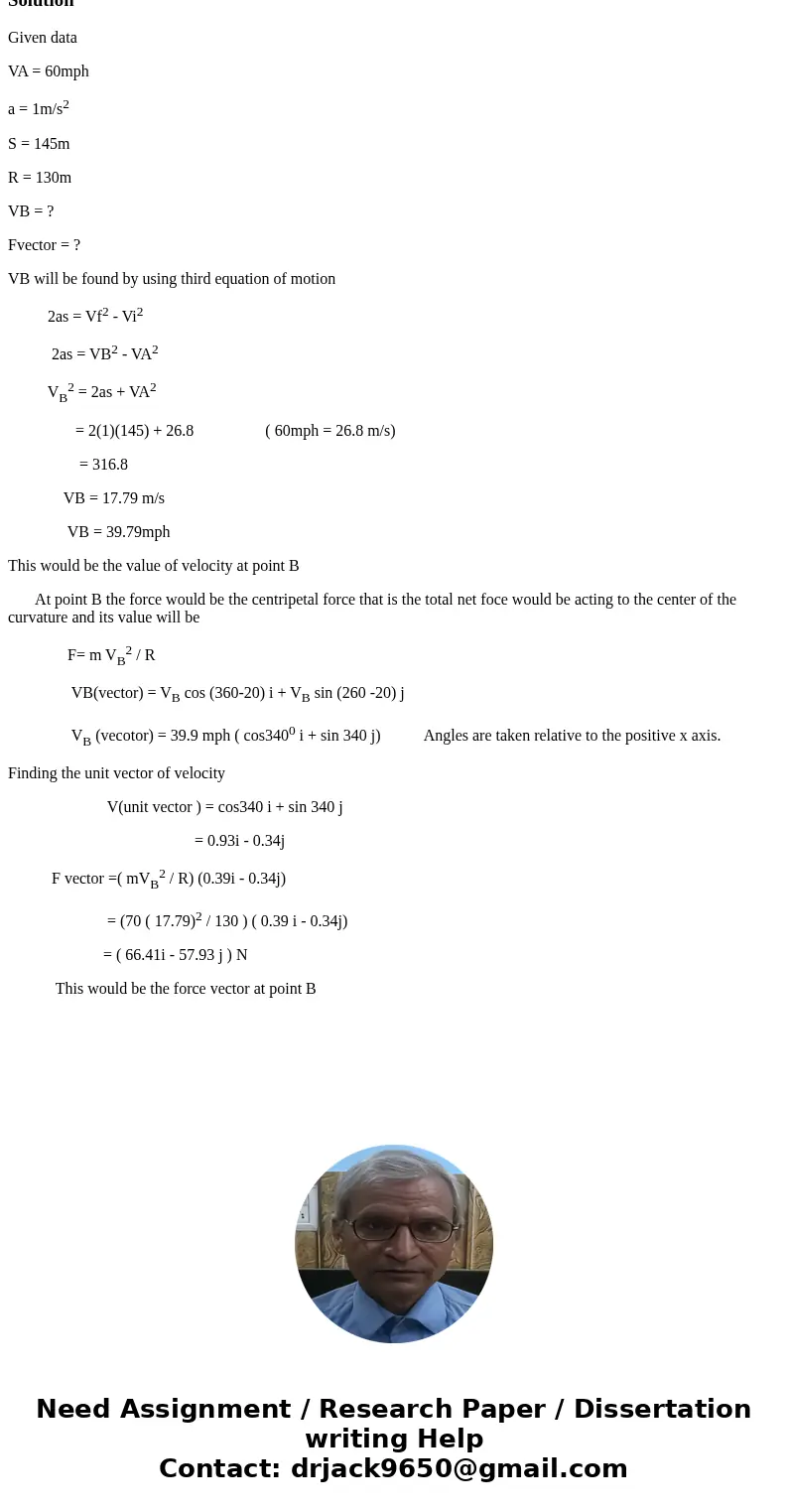A speedboat has a velocity of 60 mph at A and accelerates at a constant rate of 1 m/s^2 between points A and B following the dashed line as shown in Figure 2. Assuming that the speedboat travels 145 m to reach point B and that the radius of curvature at that point is 130 m. determine: the speed of the speedboat at point B and the time it takes to reach point B; the force vector exerted on the driver at point B assuming the mass of the driver is 70 kg (express the vector using the i and j unit vector coordinates). An aircraft lands in a carrier as shown in Figure 3. Determine the distance it will travel on the surface of the carrier before completely stopping. Assume that: the mass of the aircraft is 10.6 metric tons; at A, the height of the aircraft is 25 m and the corresponding speed is 125 km/h; the deck arresting cable (that will aid the aircraft to stop) has a spring constant of 40 kN/m and will activate 20 m after the aircraft touches the carrier surface; the friction force is 50 N/m.
Given data
VA = 60mph
a = 1m/s2
S = 145m
R = 130m
VB = ?
Fvector = ?
VB will be found by using third equation of motion
2as = Vf2 - Vi2
2as = VB2 - VA2
VB2 = 2as + VA2
= 2(1)(145) + 26.8 ( 60mph = 26.8 m/s)
= 316.8
VB = 17.79 m/s
VB = 39.79mph
This would be the value of velocity at point B
At point B the force would be the centripetal force that is the total net foce would be acting to the center of the curvature and its value will be
F= m VB2 / R
VB(vector) = VB cos (360-20) i + VB sin (260 -20) j
VB (vecotor) = 39.9 mph ( cos3400 i + sin 340 j) Angles are taken relative to the positive x axis.
Finding the unit vector of velocity
V(unit vector ) = cos340 i + sin 340 j
= 0.93i - 0.34j
F vector =( mVB2 / R) (0.39i - 0.34j)
= (70 ( 17.79)2 / 130 ) ( 0.39 i - 0.34j)
= ( 66.41i - 57.93 j ) N
This would be the force vector at point B


 Homework Sourse
Homework Sourse